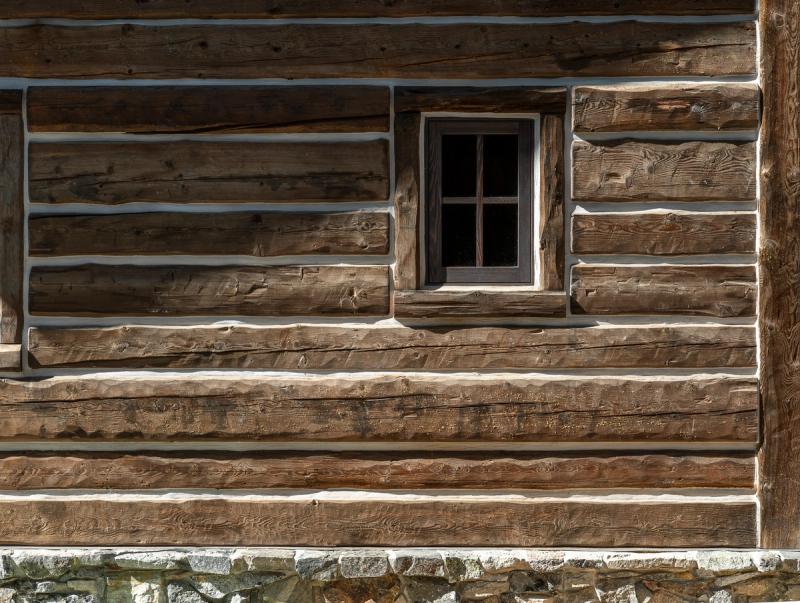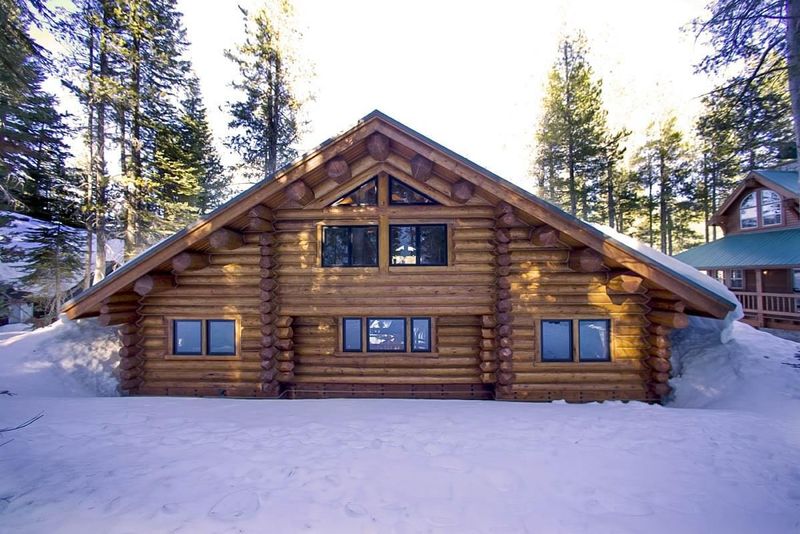Dreaming of a rustic escape? Whether you envision a cozy retreat nestled in a serene rural landscape or a touch of rustic elegance in an urban setting, this guide equips you with the knowledge to create your perfect haven. Log cabins offer a unique blend of natural beauty and timeless charm. But with two main options – log siding and full log construction – deciding which is right for you can be tricky.
This guide dives deep into the world of log homes, unpacking the pros and cons of each approach. We'll explore everything from cost and maintenance to energy efficiency and aesthetic appeal to help you make an informed decision when it comes to building your dream home.

Definition and Basic Differences
Log siding mimics the appearance of a traditional log home by attaching wood panels to a standard structural frame. Panels come in various styles and materials, offering a convenient and versatile solution for new construction and renovations. Full log homes, conversely, use massive exposed timbers logs to give homeowners the full-log look stacked horizontally, providing structural integrity and natural insulation. Each log is hand-selected and meticulously placed, showcasing the unique characteristics of the timber and the skilled craftsmanship involved in each build.
A full log home offers authenticity with the unique timber characteristics and craftsmanship. Log siding, though visually similar, lacks the same construction methods but offers easier installation and lower maintenance.
Pros and Cons of Log Siding
Many consider log siding a viable alternative to full log homes due to its unique benefits. While log siding offers the same rustic aesthetic, full log homes provide more structural integrity and premium durability.
Cost Comparison
Log siding costs significantly less than full log homes. The simpler installation process saves homeowners on labor, making log-sided homes an attractive option for those wanting the appearance of logs without the higher expense. On the other hand, massive-log-walls, while pricey, bring long-term value through durability and energy efficiency.
Maintenance Requirements
Maintaining log siding involves less effort compared to full log homes. Log-sided homes benefit from modern finishes that resist weather and pests. However, regular cleaning and occasional staining are necessary to uphold appearance and protection. Full log homes require more rigorous upkeep to treat the logs and prevent issues like decay and insect infestation.
Installation Process

Installing log siding is quicker and requires fewer specialized skills than constructing full log homes. Contractors attach to, reducing labor time and cost. This ease of installation appeals to both homeowners and builders. Full log homes, contrastingly, need skilled labor to stack and seal logs accurately. Panelized full log shear walls ensure structural integrity in full log homes but can increase project time and complexity.

Pros and Cons of Full Log Homes
Full log homes offer distinct advantages and drawbacks. Understanding these aspects helps architects, builders, and homeowners make informed decisions.
Authenticity and Aesthetic Value
Full log homes provide unparalleled authenticity and aesthetic value. These structures exude charm and rustic elegance, often featuring reclaimed wood for sustainability. Unlike log-sided homes, the interior and exterior walls are solid logs, delivering a genuine log cabin feel. This authenticity can significantly boost property value and appeal to those seeking an immersive rustic experience.
Energy Efficiency
Full log homes excel in energy efficiency. Logs naturally function as insulators, retaining heat during winter and maintaining cool temperatures in summer. Optimal energy performance requires proper sealing and thermal efficient roof construction. Construction techniques like panelized full log shear walls enhance a home's energy efficiency by minimizing air leaks. Consequently, full log homes can reduce heating and cooling costs, positively impacting long-term utility expenses.
Long-Term Durability
Full log homes are renowned for their long-term durability. With proper maintenance, such as regular staining and sealing, these structures withstand harsh weather conditions and resist pests. Solid logs are robust, but proper upkeep is essential to avoid issues like rot and insect infestation. Employing high-quality materials ensures stability and longevity. However, the labor-intensive construction and need for skilled craftsmen make full log homes a more substantial investment compared to log-sided homes.
Suitability for Different Settings
Log Siding in Urban Areas
Log-sided homes fit well in urban settings. Due to limited space and stringent building regulations, homeowners can opt for log siding to achieve a rustic look without structural complications. Log siding can be combined with modern architectural elements, offering versatility. Prebuilt log-wall panels expedite the installation process in dense neighborhoods where construction timelines impact local traffic. These siding options provide the aesthetic of full logs without extensive labor, making them ideal for city building codes and faster project turnarounds.
Full Log Homes in Rural Settings
Full log homes excel in rural environments. The expansive land allows for the construction of larger structures using panelized full log shear walls. These homes utilize log cabin windows, maintaining energy efficiency and enhancing natural light. Full log homes offer superior thermal efficiency, essential for areas with extreme weather. Their durability suits the secluded locations where immediate repair services are unavailable. Additionally, builders can use reclaimed wood, adding sustainability and rustic charm. The craftsmanship needed for constructing full log homes adds to their authenticity and charm, perfect for creating a serene retreat away from the urban hustle.

Conclusion
Choosing between log siding and a full log home depends on individual needs and preferences. Log siding offers a cost-effective, low-maintenance option, ideal for urban settings where building regulations might be stricter. It provides the rustic charm of a log cabin without the extensive labor and specialized skills required for full log homes.
On the other hand, full log homes bring unmatched durability, energy efficiency, and an authentic log cabin feel, making them perfect for rural retreats. Using reclaimed wood in both options enhances sustainability, catering to eco-conscious homeowners. Ultimately, both log siding and full log homes have unique advantages, allowing homeowners to create their dream rustic haven.
Project Management
Lead Designer & CAD Technician
After graduating with a Master's Degree in Wood Engineering, Milan started his career by traveling abroad to apprentice with Brian Schafer, Principal of Big Cabin. As an expert in the industry for over a decade now, his passion for log and timber home construction grew deeply throughout his career and ingrained his knowledge of drafting, project management, and roofing design.